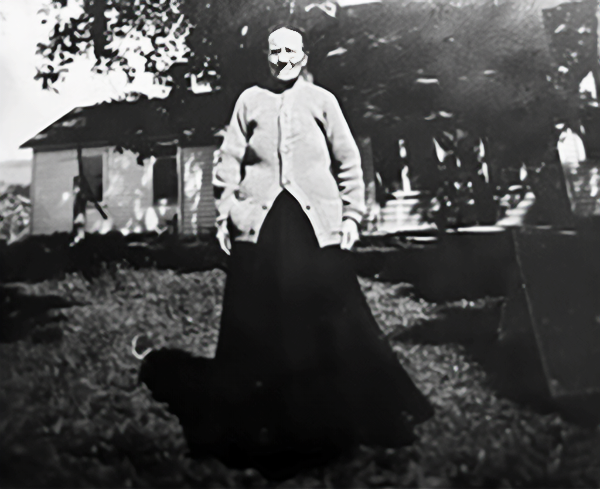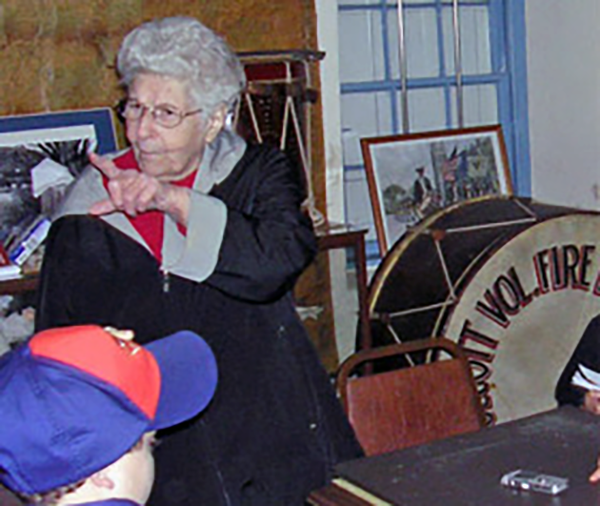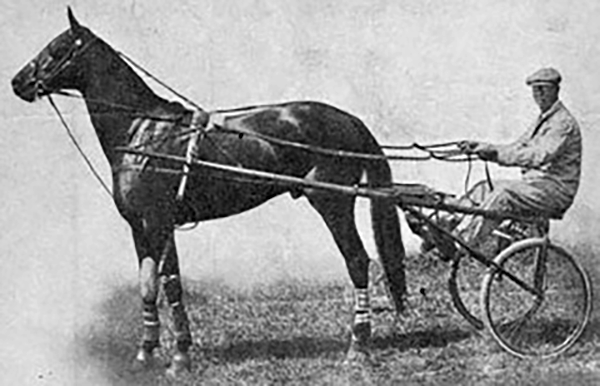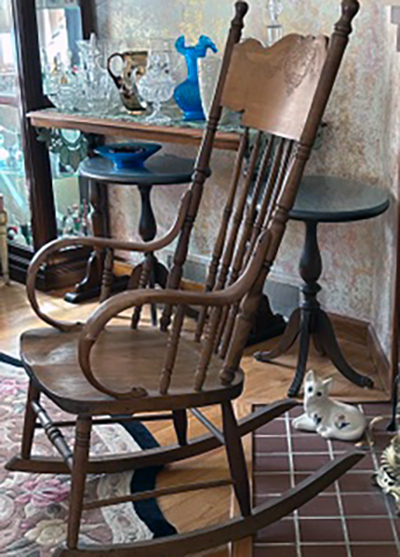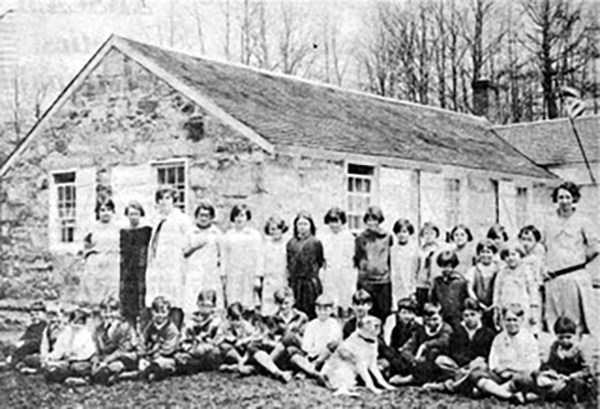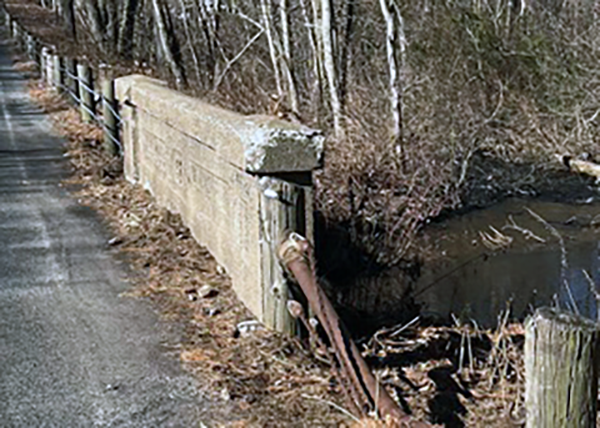|
|
||||||||||||
 |
 |
|
Wolcott Historical Society News - April 2024 By Florence Goodman The Wolcott Historical Society has been fortunate to receive some wonderful new donations for our museums many of which hold beautiful memories for the families who donate them. This month, I'd like to share a little history about our most recent donation, an old rocking chair that was donated by Roberta Leonard. If only this rocker could talk. It belonged to Roberta's mother, Loretta and was part of Loretta's early childhood memories. Roberta thought it would be a perfect addition to our Stone Schoolhouse Museum on Nichols Road since Loretta spent all her elementary years at this school and graduated from there in 1929.
Loretta was born on May 11, 1916, the oldest of four children. Her family moved to Wolcott in September of that year. She had a sister, Beatrice and two brothers Jesmond and Dante. Loretta's father built their house, which still stands on the lower end of Woodtick Road. That house and twenty-five acres of land is where Loretta grew up. Their beautifully wooded land spanned from Woodtick Road to the end of Finch Road. Her family grew many vegetables on the land, especially greens as well as cultivating wild dandelions on the property. She was of Italian heritage and her family always served "beans and greens" as she stated. They had a dairy cow that Loretta milked each morning before she went to school. She had other chores when she returned home.
It was always interesting to listen to Loretta's memories of attending the old Stone Schoolhouse on Nichols Road. She began school in September of 1922 at the age of six and graduated from 8th grade in 1929. One of the advantages of attending a one-room schoolhouse was that if you were a bright child, you could easily learn lessons that were being taught to the older students. That was the case with Loretta because she skipped third grade. She attended this school for 7 years and then went on to high school in Waterbury. Loretta loved her days at the old stone Schoolhouse. They had no days off, so they attended school in all kinds of weather. There was no indoor plumbing, but there were two outhouses, one for the girls and one for the boys and the well pump just outside the entrance door. A wood-burning stove heated the building and the older you were the further away from the stove you sat. The younger children were smaller, so they sat closer to the heat. Loretta remembers wearing gloves on some winter days because it was so cold in the classroom. All the students had jobs to do before and after school and sometimes during recess.
In the 1920s the daily walk to and from the stone schoolhouse with friends and siblings was always a great adventure. The landscape along Woodtick Road was quite different from today because the original Woodtick Road ran very close to the Mad River down behind the houses that are built on the northwest side of Woodtick Road. Garthwaite Road was originally part of old Woodtick Road and Finch Road began at that intersection. A narrow wooden bridge took you across the Mad River when traveling on old Woodtick Road. The kids could stop at the river and find many interesting creatures in the water. In 1928 improvements began on Woodtick Road; they moved the road and bridge away from the Mad River and out of the flood zone and a new cement bridge replaced the wooden one. Loretta said, "Just watching that construction was an education in itself." Most of the land along both sides of Woodtick Road up to Nichols Road was part of Bock's farm. As you got closer to the reservoir, the land ownership changed to Mr. Gustave Cornelis, a prominent businessman in the Woodtick section of town. Loretta remembers him as a grouchy man who would chase them off his property, but they always found a way to return because there was so much to do there. There was the swinging bridge that ran over the Mad River; the boys would swing it and scare the girls as they crossed. Then there was the half-mile trotter track located where the baseball field is today. Mr. Cornelis loved racing his horse and sulky around the track, and they loved watching this on their walk home from school.
Roberta remembers her mother telling her the story about the rocker that originally belonged to a neighbor who lived near them on lower Woodtick Road. The neighbor's name was Aunt Mary Drew. Loretta said that she would sit on Aunt Mary's lap while rocking in the chair and eating a lemon tart that Aunt Mary gave her. Originally Roberta thought there was a connection between the name Drew to the actress, Drew Barrymore, but thanks to our excellent researcher, Deb DuBois we realized that is not the case. Deb did find out from the 1920 census that Aunt Mary Drew's home was at 21 Woodtick Road, which was probably close to our town line just north of Sharon Road and in those days that road was called Lover's Lane. Aunt Mary Drew was born in Ireland circa 1836 and her family came to this country in the mid-1800's. It is believed that her maiden name might have been Bennett because she was living with that family on lower Woodtick Road in 1920. There were several Bennets also living in that household in the 1920 census: Joseph, listed as the head of the house; Andrew, the father; and John, the brother; Mary Drew was listed as an aunt; our assumption is that she was a sister or sister-in-law to Andrew Bennett. If only that rocker could share its history, we might know the exact story of Aunt Mary Drew and the rocker. Thank you, Roberta, for sharing the rocker and your mom's childhood memories.
(Information for this article was taken from a May 15, 2016, article by Flo Goodman in the Wolcott Community News and a July 15, 2019 article in the Wolcott News by Florence Goodman; research on Ancestry.com was done by Deb DuBois; the photo of Aunt Mary Drew was donated by Roberta Leonard)
Aunt Mary Drew in 1925 at the age of 95. She was visiting family in Salisbury, Connecticut.
Loretta speaking to scouts at the Stone Schoolhouse Museum.
A 1913 photo of Gustave Cornelis who built a racetrack on the property across from the Stone Schoolhouse on Nichols Road where the baseball fields are today.
The rocker that belonged to Aunt Mary Drew and then to Loretta Leonard.
This is the 1929 class at the Stone Schoolhouse. Loretta is the ninth student from the left in the back row.
The concrete bridge on Woodtick Road built in 1928.
To view past installments of the Historical Society News, click here. |
|
|
[Home]
[News]
[Purpose]
[Calendar]
[Museum]
[Membership]
[History]
[Contacts]
[Links]
All material at Wolcott Historical Society Web sites Copyright © 2000-2024 Wolcott Historical Society |
